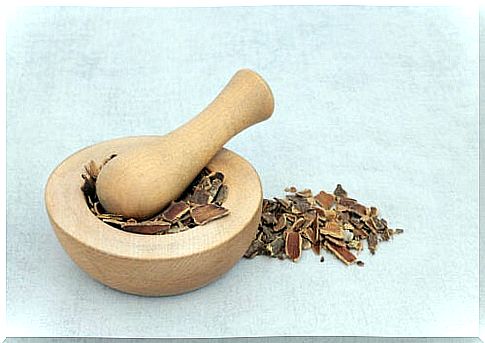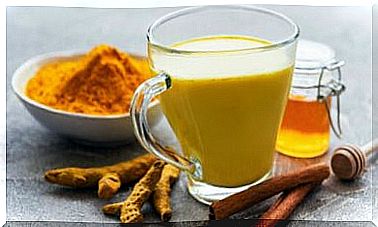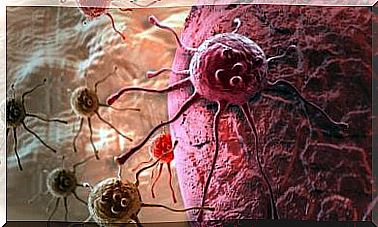Cascara Sagrada: Origin, Benefits And Possible Risks

Cascara sagrada (Pursh’s buckthorn), scientifically named Rhamnus purshiana, is a shrub native to temperate areas of North America. It has elliptical leaves, slightly toothed, measuring between 4 and 8 centimeters. In addition, the tree reaches between 6 and 12 meters in height. Although it blooms and bears black drupe-shaped fruit, the bark is most often used because it contains medicinal substances.
Cascara sagrada is known as a natural laxative because it promotes intestinal motility to facilitate stool evacuation. However, its use is not approved by the US Food and Drug Administration (FDA), which has issued several warnings about possible risks.
The benefits of the sacred Cascara plant
Cascara sagrada is also known as “California sea buckthorn”, “sacred bark”, “bear plant” or “yellow bark”. In ancient times, the natives used the bark of this tree for medicinal purposes, especially for the relief of digestive disorders such as constipation.
In fact, in the 1890s, the US Food and Drug Administration (FDA) approved the use of the plant as a non-prescription laxative. This approval was withdrawn in 2002, given the lack of evidence on its safety and effectiveness.
It is important to note that there are not enough scientific studies on the properties and effects of the plant. A review published in Phytotherapy Research claims that emodin, an anthraquinone present in the plant, is behind its laxative effect.
This substance is responsible for inhibiting the absorption of water and electrolytes from the intestines. Thus, the volume of the stool increases, as does the pressure in the intestine. The result of this process is the stimulation of peristalsis, which allows an optimal evacuation of feces.
The plant has been classified as a “stimulant laxative”, but its effect is milder than that of other plants, such as senna. Even its mechanism is different from options such as psyllium , because the latter create a kind of gel that facilitates the elimination of waste retained in the intestine.
It is not an FDA approved treatment to relieve constipation. However, it is available as an herbal food supplement or as an ingredient in prescription laxatives. It is estimated to induce fecal excretion approximately 8 or 12 hours after consumption.

Risks and contraindications
To relieve constipation, this plant should be used only occasionally and in the short term. Its use is estimated to be safe and well tolerated in most healthy adults. However, some may experience abdominal pain or cramps.
The worst problems occur after excessive consumption of Cascara sagrada. Studies have shown that anthraquinones are harmful when ingested in excessive amounts. It is also thought to cause melanosis coli , an abnormal brown-black color of the colon.
If consumed for one or two weeks, Cascara sagrada causes a significant loss of electrolytes and dehydration. Consequently, the following symptoms are also possible:
- Severe nausea
- Feeling weak or tired
- Headache
- Muscle spasms
- Heart rhythm disorders
- Numbness or tingling in the extremities
- Decreased amount of urine
- Confusion
- Constipation
Due to the lack of scientific studies, it is not known whether the plant is harmless to certain populations with special characteristics. Therefore, it is contraindicated in the following cases:
- Pregnancy and lactation
- BOYS
- Patients with diverticular disease, ulcerative colitis, Crohn’s disease or severe hemorrhoids
- People with cardiovascular disease
- Severe anemia
- Recent colon surgery
- Patients with gastrointestinal cancer
- People with liver or kidney disease
- Suspicion of appendicitis
Simultaneous use of Cascara sagrada with the following medications is not recommended:
- Cardiac glycosides such as digoxin, digitoxin and digitonin
- Corticosteroid drugs

Dosage and mode of consumption
To date, an optimal dose for ingestion of the plant has not been specified. The dose may vary depending on the age, weight and health of the person being treated. Therefore, it is essential to follow the recommendations of the supplement manufacturer. The plant is available in the form of powder, capsules, tinctures and teas. It must not be used for more than 3 days.
What should you remember about Cascara sagrada?
You will probably come across Cascara sagrada supplements when looking for complementary remedies for constipation. However, you should know that it is not a first-line treatment for this disease. In fact, it must be used with extreme caution because of the risks involved.
If you choose to consume it, you should not exceed the dose suggested by the manufacturer or prolong the intake. If possible, consult your doctor to find other alternatives.









